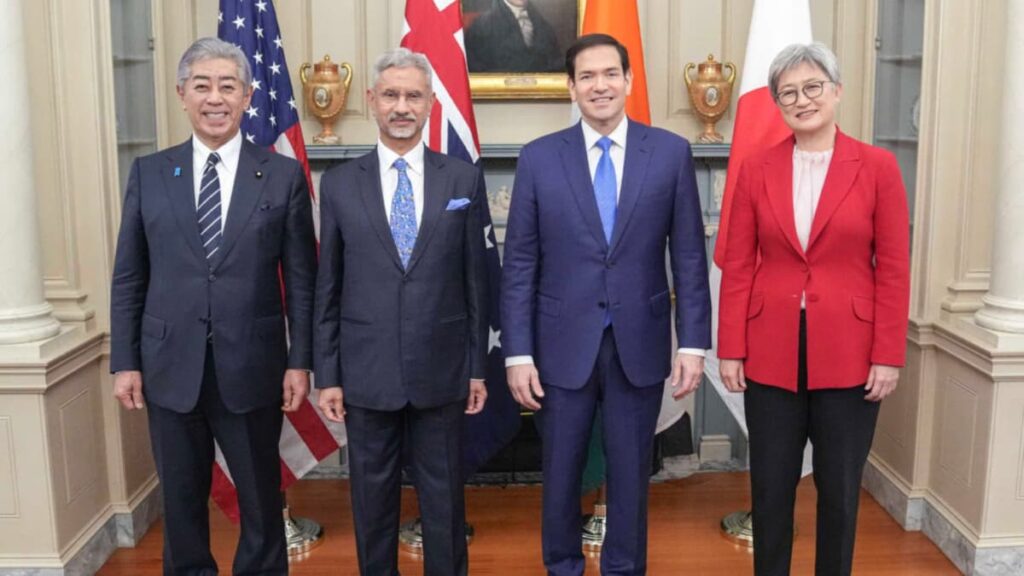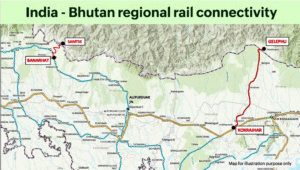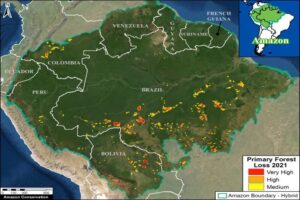
Countering China – The Quad’s Critical Minerals Initiative and Its Strategic Impact
- INTRODUCTION – WHY IN NEWS?
On July 3, 2025, the QUAD (Quadrilateral Security Dialogue) — comprising India, the United States, Japan, and Australia — announced a strategic move to establish a secure and resilient supply chain for critical minerals, challenging China’s dominance in the global rare earth elements (REEs) market.
This initiative aims to ensure technological sovereignty, mitigate supply chain disruptions, and reduce economic coercion by China, which currently holds a near-monopoly on rare earth processing and exports.
- WHAT ARE CRITICAL MINERALS?
Critical minerals are naturally occurring metallic or non-metallic elements essential for:
- Clean energy technologies (solar panels, wind turbines, electric vehicles)
- Defense and aerospace (fighter jets, missiles)
- Semiconductors and electronics
Examples include:
- Rare Earth Elements (REEs): Neodymium, Lanthanum, Terbium, Dysprosium, Scandium
- Strategic Metals: Gallium, Germanium, Antimony, Lithium, Cobalt
These minerals are often limited in availability, difficult to substitute, and vulnerable to geopolitical supply disruptions.
III. CHINA’S DOMINANCE: THE CORE CONCERN
- Processing Power, Not Just Mining
While many countries mine rare earths, China dominates 80–90% of the global processing and refining capacity, especially for:
- NdFeB magnets (Neodymium-Iron-Boron)
- High-strength magnets used in EVs, wind turbines, and military equipment
- Economic Coercion Tactics
China has:
- Restricted exports of critical minerals like gallium, germanium, and antimony
- Imposed licensing requirements on companies seeking magnets or rare earths
- Denied export permits to Indian automakers, citing military application concerns
- QUAD’S STRATEGIC RESPONSE
- Joint Statement Objectives
The Quad nations declared:
- Urgent need to reduce dependency on a single country (China)
- Concerns over “abrupt constriction and future reliability” of key supply chains
- Plan to create a critical minerals alliance to ensure national and economic security
- Secure Supply Chains for Strategic Autonomy
India, Japan, the US, and Australia are:
- Pooling resources and expertise
- Investing in exploration, processing infrastructure, and recycling technologies
- Identifying alternative mining zones in Australia, India (e.g., Odisha, Andhra), and Africa
- ECONOMIC IMPACT ON INDIA’S EV SECTOR
India’s Electric Vehicle (EV) sector is already experiencing:
- Supply delays due to Chinese restrictions
- Pending applications for rare earths not cleared by China
- Pressure to import entire motor assemblies instead of individual components
This hits India’s:
- Make in India mission
- FAME (Faster Adoption of Electric Mobility) initiative
- Battery and auto component manufacturing ecosystem
- GROWTH OF GLOBAL GEOTECHNOLOGICAL COMPETITION
Strategic Significance of REEs
- They are the “vitamins of modern technology.”
- Without REEs, digital economies, clean tech, and military systems cannot function.
Past Trade Tensions
- 2010: China cut off REE exports to Japan after a maritime dispute
- 2018–2020: US-China trade war escalated rare earth tensions
- 2023–25: China imposed new restrictions on gallium and germanium
These events proved that overdependence on a geopolitical rival is a national security risk.
VII. INDIA’S CURRENT STRATEGY
India is adopting a multi-pronged strategy:
- Policy reforms for faster mineral auctions
- Partnerships with Japan and Australia for REE tech
- Expansion of domestic exploration in states like:
- Odisha
- Andhra Pradesh
- Rajasthan
- Jharkhand
- India’s National Mineral Policy and PLI Scheme (Production-Linked Incentives) also encourage local processing.
VIII. LEGAL, POLICY & STRATEGIC FRAMEWORK FOR CLAT 2026
- Legal and Economic Themes
Relevant Legal Concepts:
- Economic Sovereignty
- Doctrine of Self-Reliance (Atmanirbharta)
- WTO trade restrictions and national security exception (Article XXI of GATT)
Relevant Constitutional Principles:
- Article 21: Right to Livelihood
- Article 39(b): Equitable distribution of resources
- International Agreements to Know
- Convention on Strategic Materials (non-binding)
- Indo-Japan Critical Minerals Agreement
- US Critical Minerals Security Act (2024)
- QUAD Mineral Security Partnership
- CASES AND PRECEDENTS (FOR CLAT LEGAL REASONING)
- Centre for Public Interest Litigation v. UOI (2G Case)
➤ Held that natural resources must be allocated through fair and transparent means. - M.C. Mehta v. Kamal Nath (1996)
➤ Reaffirmed Public Trust Doctrine for natural resources. - Reliance Natural Resources Ltd. v. RNRL (2010)
➤ Emphasized national interest in pricing and control of natural resources.
- GEOPOLITICAL SIGNIFICANCE OF THE QUAD INITIATIVE
- Indo-Pacific Security Alignment
By building critical mineral resilience, the Quad:
- Counters China’s weaponization of trade
- Enhances strategic depth in the Indo-Pacific
- Serves as an economic bulwark alongside AUKUS, IPEF, and ASEAN
- Message to Global South
India, as a developing economy:
- Asserts its voice in global supply chain governance
- Champions fair trade without coercion
- Builds “South-South” collaboration on technology and sustainability
- NOTES ON TERMINOLOGY (CLAT-STYLE EXPLANATIONS)
Term | Meaning |
Quad | Strategic forum of India, US, Japan, and Australia |
Critical Minerals | Resources essential for tech, defense, and energy; hard to substitute |
Rare Earth Elements (REEs) | 17 chemically similar elements used in electronics, EVs, lasers |
NdFeB Magnets | Neodymium-Iron-Boron magnets; strongest commercially available |
Economic Coercion | Use of trade as a tool of pressure in foreign policy |
Public Trust Doctrine | Natural resources belong to the people; government is only a trustee |
XIII. CONCLUSION: INDIA’S RACE FOR RESOURCE RESILIENCE
As India accelerates into a clean tech future, securing access to critical minerals is as important as clean energy itself. The Quad’s coordinated stand represents a shift from fragile globalization to resilient regionalism.
India must:
- Invest in domestic exploration and refining
- Build long-term partnerships for resource access
- Guard against geopolitical blackmail via trade dependencies
In the 21st-century mineral race, economic independence is strategic independence.




